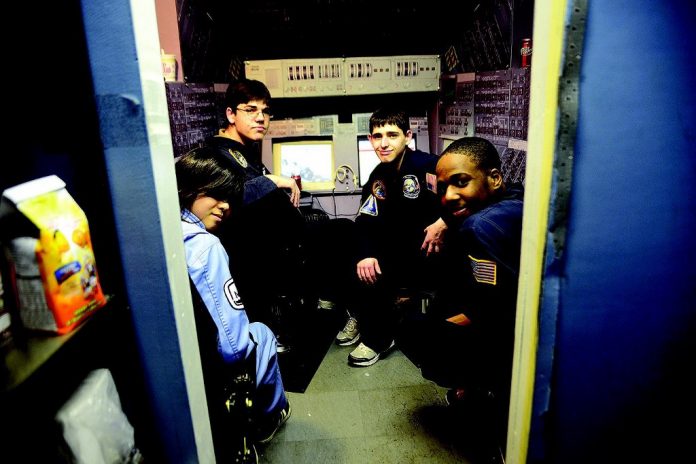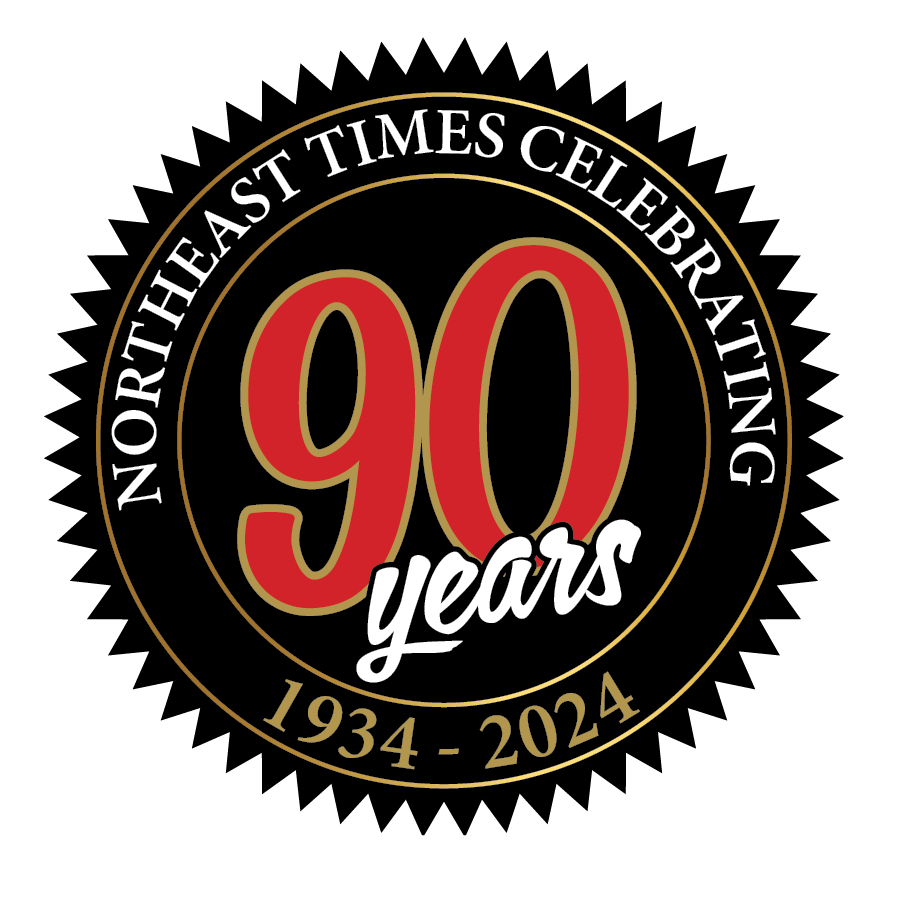Soaring students: Clockwise from left, Rachel Butty, 16, Tyler Mallon, 15, Jonathan Seitz, 16, and Nicholas Worrell, 16, are the astronauts in a shuttle at the Northeast High School SPARC program. They are headed to space to try to curb a killer asteroid
Some Northeast kids saved the world a few weeks ago. They blasted into space and destroyed a giant asteroid that was heading for Earth.
It wasn’t easy, and just like any space mission, it had its risks.
One young astronaut was badly burned when an attempt to fire a rocket at the asteroid from the moon failed. Another got radiation sickness when astronauts succeeded in destroying the big space rock.
They were whisked away for medical treatment by members of the Burholme Ambulance Corps after they landed — during sixth period at the Medical, Engineering and Aerospace Magnet School at Northeast High.
The “space mission” on April 25 and 26 was so realistic that one student in algebra teacher Joe Connelly’s class reassured another, as they visited mission control, “They’re not really in space.”
Only virtually.
The magnet school’s Space Research Center, or SPARC, played out its 48th mission over two days, using a script written by flight management manager junior Jeremy Cruz.
The mission of astronauts Tyler Mallon, 15; Jonathan Seitz, 16; Rachel Butty, 16; and Nicholas Worrell, 16, was to blast an asteroid that was threatening Earth.
Cruz, 17, a veteran mission script writer, went for big and fast as well as dangerous.
He envisioned a mile-wide asteroid hurtling toward our home world at 30,000 mph, one that would pack the punch of a million-megaton bomb when it hit.
“It would destroy humanity,” he said.
It had to be stopped.
Eazy-peazy, right? Just head for the moon, have your handy robot launch a rocket at the asteroid and boom, it’s time to go home, kick back and order pizza.
But no, Cruz didn’t write the mission to be easy. After all, things can go wrong in outer space.
On the moon, that’s what happened. The rocket launch didn’t work out as planned, and one astronaut got burned badly.
The backup plan was for two astronauts to take out the asteroid directly by landing on it and blowing it up. That worked, but one astronaut was severely sickened because his space suit didn’t protect him from the asteroid’s radiation.
The two “injured” astronauts were kept alive under direction of the mission’s medical team — Kayla Little, 17; Jessica Kirgin, 17, and Jennifer Hoang, 16.
This year’s mission was dedicated to Neil Armstrong, the first man to walk on the moon, and the victims of the Sandy Hook massacre.
Last year’s mission was dedicated to astronaut and Northeast native Chris Ferguson. This year, the captain of the last shuttle flight called into to check on and encourage the SPARC mission.
Students worked in shifts through the two-day mission, and 15 stayed in the school overnight, said Margaret Karpinski, director of SPARC and the magnet school.
“They live for the overnight,” she said. “They totally enjoy it.”
And they get to work with some great equipment, too, including a 21-foot mockup of a shuttle orbiter, an Apollo training capsule provided by NASA and mission control consoles as well as robotics and electronics labs.
Along with Karpinski, the students were guided by Connelly, robotics adviser Carole Niemiec and school nurse Anne Johnson.
Jessica Hattina, 17, served as mission spokeswoman. Shareef Alwarasneh, 17, was the mission’s administration manager. Christian Lattanzio and Lawrence Delapena, both 17, were computer managers. Joshua Carey, 18, and Brad Jacobson, 18, were the robotics managers. Engineering managers were Sam Barriskell and Tara Behr. Briana Ferguson served as an alternate astronaut.••
Reporter John Loftus can be reached at 215–354–3110 or [email protected]





